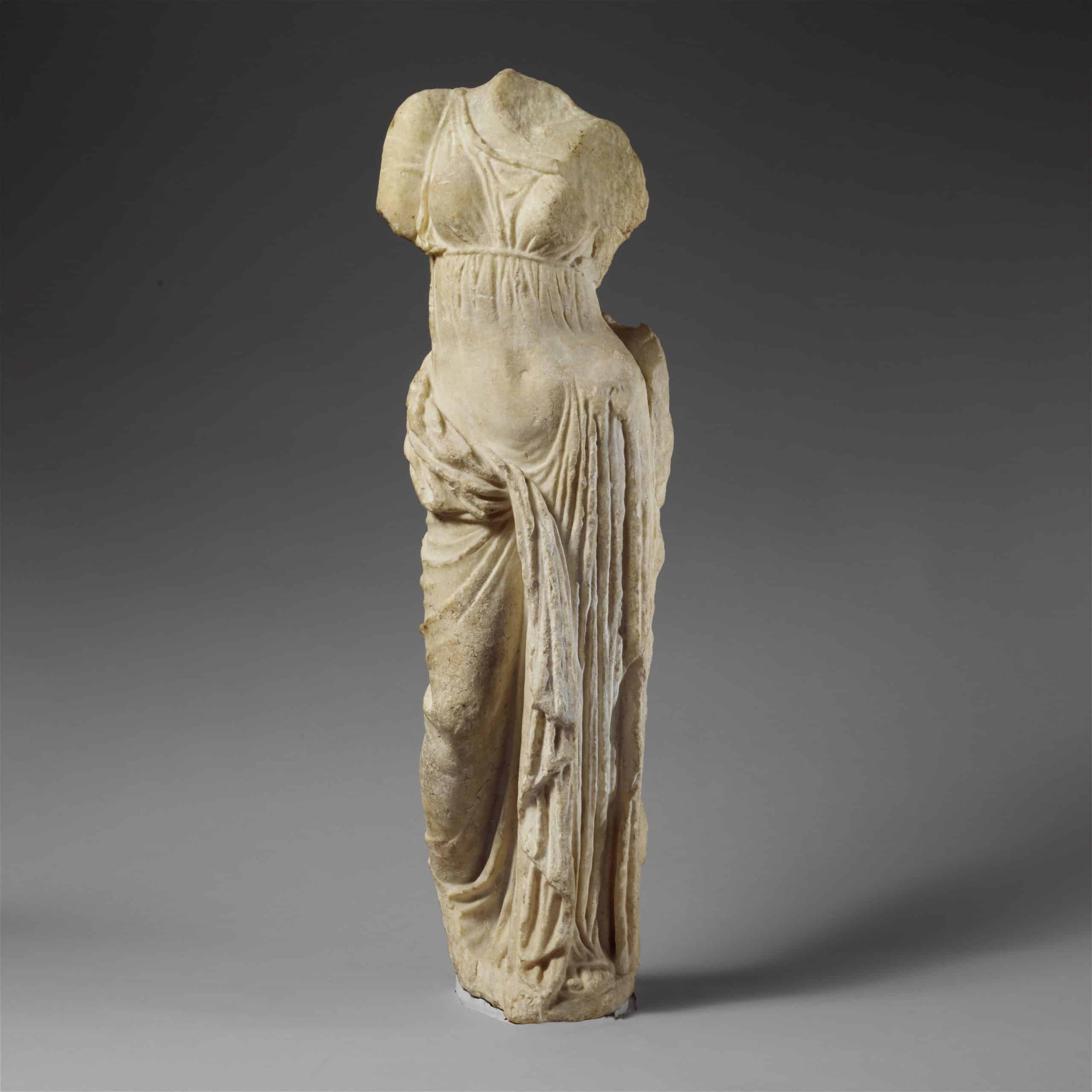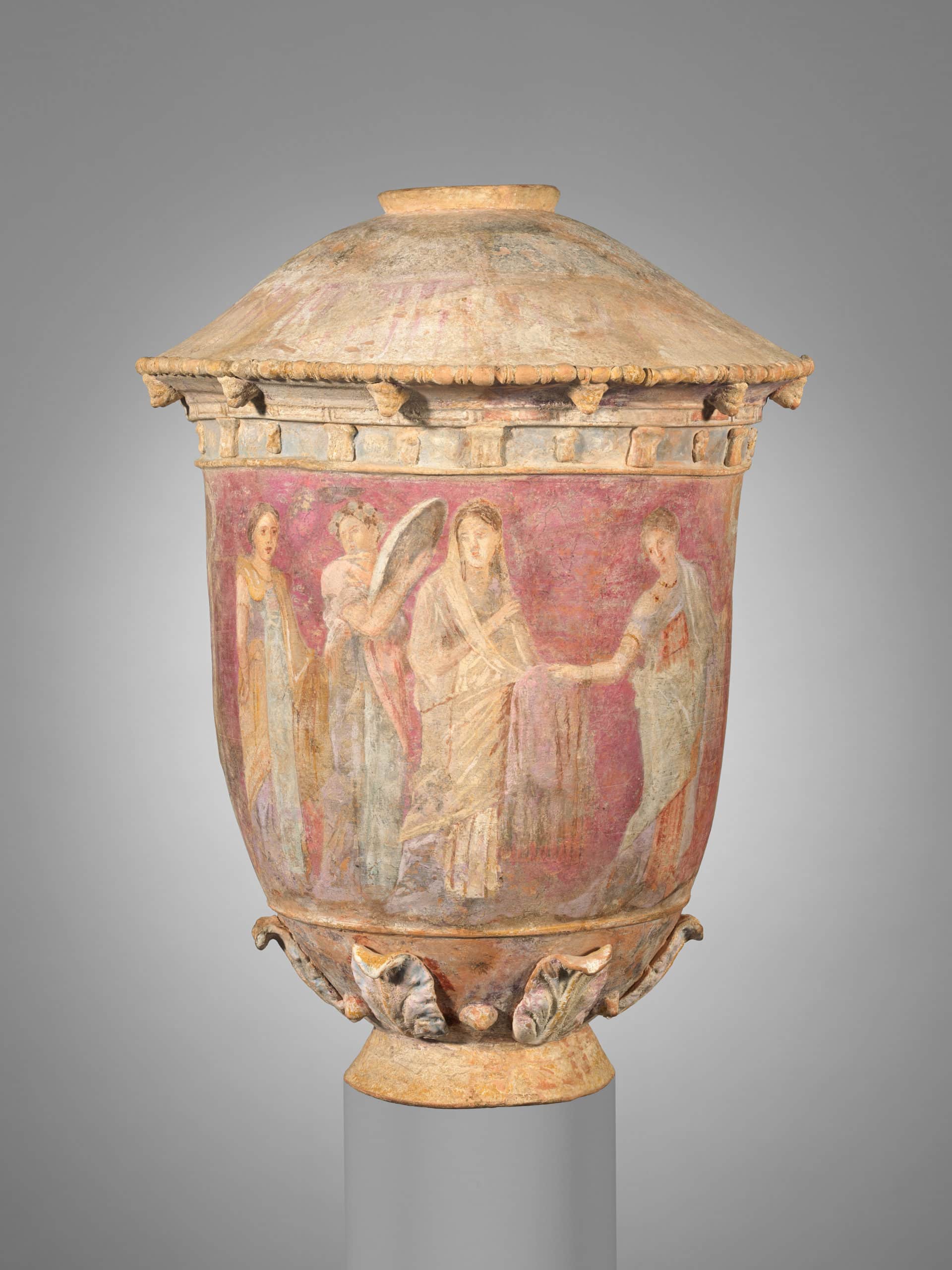Marble Greek and Roman Statues Were Actually Painted in Brilliant Colors
- By Daniella


When someone tells you to picture a Greek or Roman statue, what do you see in your mind’s eye?
Probably a muscular, god-like figure with wavy hair and blank eyes, carved into pure white marble.
What if we told you that that statue you’re picturing might not have been white at all?
What if we told you that the ancient world of snow-white pillars and statues you always imagined was actually stunningly multicolored?
Just like how MyHeritage In Color™ transforms the way you see the ancestors depicted in black and white photos and brings faded colors back to life, in recent years, scientists have been attempting to re-render ancient Greek and Roman statues in what was probably their original coloring — and the results are incredible.
Colorblind scholarship
Greek and Roman sculpture and architecture had a major comeback during the Renaissance. During this period of artistic revival, classical art was revered as the paragon of aesthetic perfection. And when Renaissance-era artists and scholars looked at the Greek and Roman sculptures and structures they found, what they saw was plain white marble.

For example, this famous statue of the Greek goddess Aphrodite, carved in the 2nd century B.C.E. (Source: Metropolitan Museum of Art)
So they thought that pure white sculpture was the ideal. Bright colors were seen as childish and inferior. Goethe wrote in his Theory of Colors that “savage nations, uneducated people, and children have a great predilection for vivid colors” and that “people of refinement avoid vivid colors in their dress and the objects that are about them.”
This bias was so strong and enduring that even when clear evidence began to emerge that the Greeks and Romans painted their sculptures, many scholars refused to accept it. Even today, many people think of brightly multicolored styles as being tacky.
In the 19th century, archaeologists unearthed better-preserved items that had traces of color. But these were mostly ignored — and often actively scrubbed off — until as late as the 1960s. It was only then that scholars began to confirm that the white sculptures we all associated with ancient Greece and Rome were actually painted with multiple colors (a practice known as polychromy). The paint had deteriorated and faded over time, but evidence of it remained.

A terracotta statuette of a woman from 3rd-century B.C.E. Greece, with some of the original pink, Egyptian blue, and red dyes still visible (Source: Metropolitan Museum of Art)
Reconstructing ancient polychromy
In recent decades, scholars have been able to use advanced technology to view and try to recreate the brilliant colors the Greeks and Romans used. For example, in 2006, two German archaeologists — Vinzenz Brinkmann and Ulrike Koch-Brinkmann — used a raking light and ultraviolet photography to reveal the colors once painted on the statues in the Aphaia Temple, located on the Aegina Island in Greece. They found stunning, multicolored, intricate patterns on the sculptures. The results of their efforts were displayed in a touring exhibition called Gods in Color: Polychromy in the Ancient World, and are currently on display at the Metropolitan Museum of Art in New York as part of the Chroma: Ancient Sculpture in Color exhibition.


Reconstructing the colors of ancient art is no easy task. Scientists must analyze the paint fragments that remain on the sculpture to determine the compounds used, and try to determine the original hue of the paint. It’s important to reproduce the paints rather than rely on the colors as they are now, because paint can change color over time, especially when they are made from organic material. Scholars use ancient sources as guides, such as Roman Pliny the Elder’s Naturalis historia, which describes how to prepare various pigments used in painting and sculpture. In the ancient world, artists made paints from minerals, plants, and animals. Stones such as azurite and malachite were used to produce blue and green, while cinnabar was used to produce red. A deep, highly prized violet color was produced from a snail called the murex. These compounds are finely ground and mixed with a binding agent, like oil, casein, or egg, and then applied to the painting or sculpture using a brush.

Terracotta vase from ancient Greece with painted colors clearly visible. (Source: Metropolitan Museum of Art)
Of course, there is no way to know exactly how the sculptures looked, because the appearance of a painted piece of art is not merely the result of the colors of the paints — it is also the result of the techniques used by the painter. Some art historians complain that the colored reconstructions in these exhibitions are too bright and lurid, claiming that the Greeks and Romans may have been more subtle in their application of the colors. Additionally, paint doesn’t look the same on plaster casts as it does on the original marble. Some scientists have used digital technology to reproduce the painted sculptures instead, which helps mitigate some of these issues.
The introduction of MyHeritage In Color™, our colorization and color restoration feature, has emphasized for many of our users how much of a difference it makes to see previously monochrome or very faded images in full color. Seeing these ancient statues in such bright colors casts them in an entirely different light, too.









